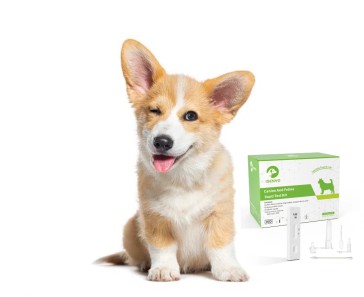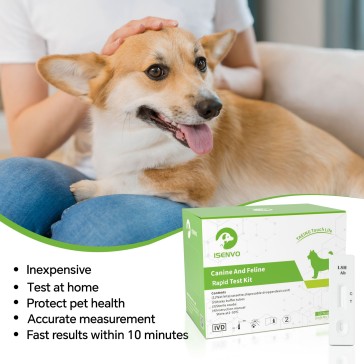An Invisible Threat, Visible Protection
Blog
- Categories: Animal Health
The advantage of the GIA rapid testing kit is not just its speed, but the improved decision-making quality, increased treatment accuracy, and paradigm shift in health management brought about by this time compression.
- Categories: Animal Health
If I get lost, how do I get home?
Methods for your pet to find its way home. - Categories: Animal Health
This is precisely the significance of implantable pet microchips—they are not tracking devices from science fiction, but a permanent, non-removable digital ID tag.
- Categories: Animal Health
Scanning a video may seem like a small act, but it embodies responsibility and care—let technology silently protect us, and let every identification connect us with peace of mind.
- Categories: Animal Health
He just seems a bit lethargic sometimes and has a minor skin issue. It's probably nothing, right? — Many pet owners might have thought this, until the problem becomes serious.
- Categories: Animal Health
As pet parents, our greatest wish is for our furry companions to stay healthy and happy by our sides for as long as possible. But they are born unable to speak and cannot tell us where it hurts. Often, by the time they show obvious signs of illness, the condition may have already been developing for a while.
In this situation, pet home test kits act like an extension of our "eyes" and "ears," serving as the first line of defense for their health. They are more than just a product; they represent a new, responsible philosophy of pet care.
Part 1: Breaking the Communication Barrier: Turning "Guesswork" into "Insight"
We've all experienced these worries:
-
The cat didn't eat much today—is it being picky, or is it unwell?
-
The dog is urinating frequently and the color l
-
- Categories: News
The moment you pet your furry friend, a wonderful physical and mental transformation begins.
- Categories: Animal Health
Get early screening results for your dog in minutes using serum/plasma, and safeguard their well-being.
- Categories: Animal Health
Feline leukemia virus (FeLV) is one of the leading causes of illness and death in cats around the world. This contagious virus weakens a cat’s immune system, leaving them vulnerable to infections, anemia, and even cancer. While the disease is serious, it can be managed—and even prevented—with early detection and responsible care.
In this post, we’ll explain what FeLV is, how it spreads, what signs to look out for, and how you can test for it easily at home using the TAEING FeLV Rapid Home Test Kit.
What Is FeLV?
FeLV is a viral infection that targets a cat’s immune system and bone marrow. Once infected, a cat may develop chronic illnesses or cancers, and their ability to fight off everyday infections becomes severely compromis










